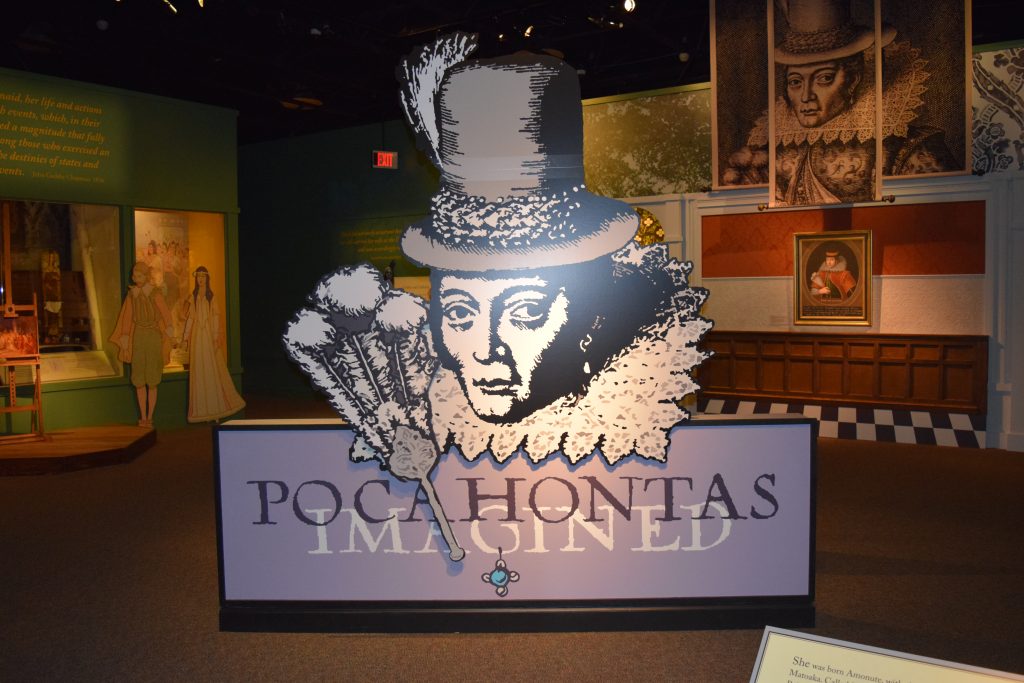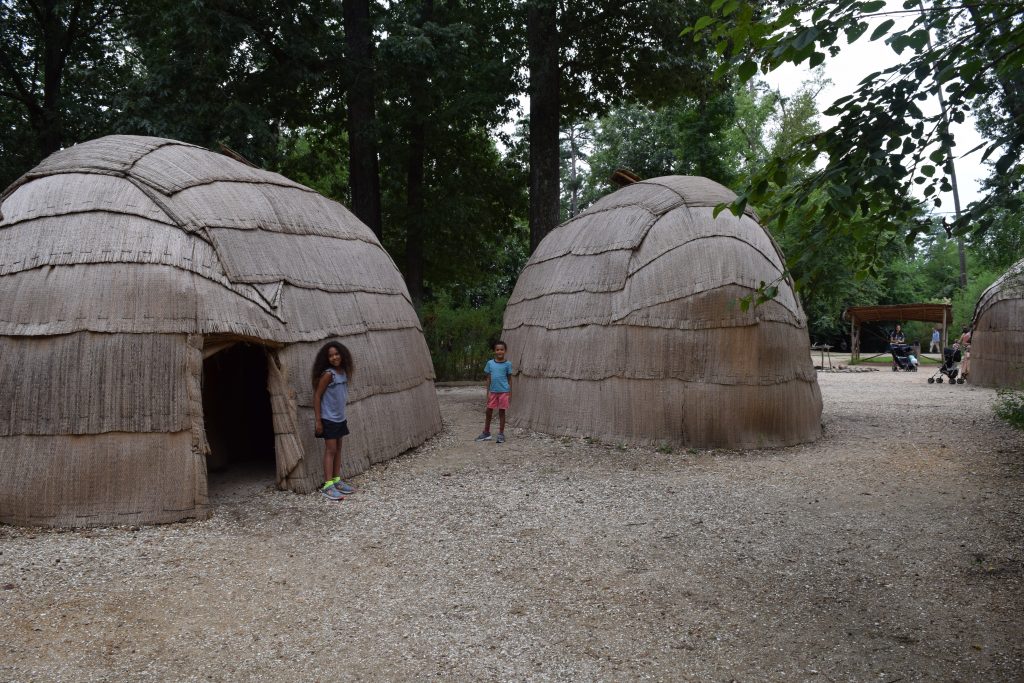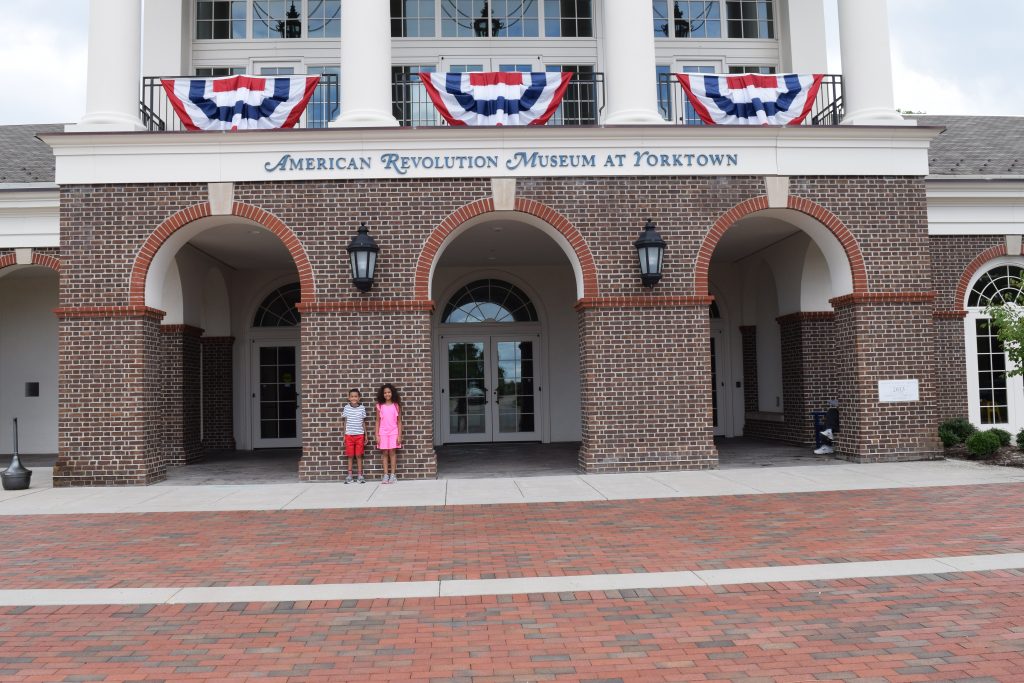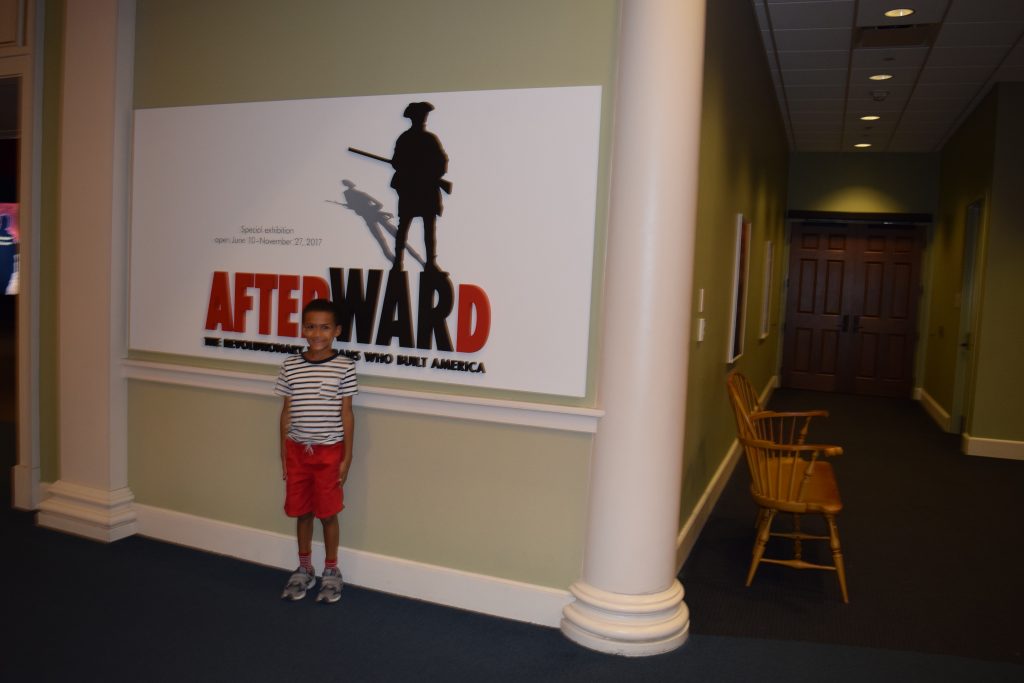Over the summer, we decided to visit Colonial Williamsburg and the Jamestown Settlement. We actually spent two weekends there because we loved it so much. The Jamestown Settlement is a living history museum that is as exciting as it is interesting. Visitors are immersed in the world of America’s first permanent English colony. History is fun! Here are some ideas on what to see to make your trip educational and fun.
Take a journey of historic proportions at Jamestown Settlement and the new American Revolution Museum at Yorktown – two living-history museums that explore the story of America’s beginnings, from the founding of America’s first permanent English colony in 1607 to the Revolution and the establishment of a new nation almost two centuries later. Discover artifact-filled exhibition galleries and take part in activities in outdoor living-history areas to learn about life in the 17th and 18th centuries. Explore a variety of ticket options to visit Jamestown Settlement and the American Revolution Museum at Yorktown.
Open year-round 9 a.m. to 5 p.m. daily (9 a.m. to 6 p.m. June 15-August 15), except Christmas and New Year’s days.
Jamestown Settlement
Pocahantas Imagined (Special exhibit Now thru January 2018)
Four hundred years after the 1617 death of Pocahontas in England, her image and legend live on. Using depictions of Pocahontas from across the centuries, Jamestown Settlement will present “Pocahontas Imagined,” a special exhibition opening July 15 that illuminates the reasons behind her enduring legacy as well as her impression on popular culture and art.
The special exhibition, which will run through January 28, 2018, will feature portraits and sculptures inspired by Pocahontas, as well as memorabilia, advertisements and interactive experiences, including opportunities to step into a cutout of an oversized 1907 postage stamp featuring Pocahontas’s image. Visitors will be able to see Pocahontas’s likeness and her portrayal in the 20th century through a variety of media.
A special children’s area in the exhibition will allow young visitors to experience Pocahontas’s life as a little girl in a Powhatan Indian village and try art-related activities, such as weaving, decorating clay pots on a chalkboard wall, and learning about hunting and gathering.
Young visitors will also receive an activity card that they can take outdoors to explore artistic patterns, lines and colors in objects in Jamestown Settlement’s re-created Powhatan Indian village, three 1607 English ships, and colonial fort.
Feature Film, 1607: A Nation Takes Root
Begin your visit to Jamestown Settlement with the new dramatic documentary film, 1607: A Nation Takes Root, shown every 30 minutes in the museum theater. The film traces the evolution of the Virginia Company that sponsored the Jamestown Colony, examines the relationship between the English colonists and the Powhatan Indians, and chronicles the arrival of the first Africans in 1619.
Jamestown Ships
Climb on board replicas of Susan Constant, Godspeed, and Discovery at the Jamestown Settlement ships’ pier.
Powhatan Village
Explore the Powhatan way of life in an immersive, re-created village setting at Jamestown Settlement. Elementary school aged children learn about the Powhatan Indians during first and second grade. The village offers you a chance to see, touch and imagine what life was like living within the small, simple community.
Revolution Era Farm
Experience the lifestyle on a typical rural farmstead from the period of the American Revolution. The story of Edward Moss and his family provides historical interpreters a frame of reference for talking about farm and domestic life, as well as the lives of enslaved African Americans during the American Revolution period. A distinctive new feature of the farm is a 12×10 foot building to represent quarters for enslaved people, adjacent to a swept yard and small garden. The farm includes a fruit tree orchard and a filed for growing wheat, corn, tobacco, flax and cottons – crops Edward Moss would have sold for cash and used for food, animal fodder and cloth production.
James Fort
Enter the world of the early colonists in a re-created fort at Jamestown Settlement.
Kids Museum Guides
The young people’s visitor guides have been developed to supplement the experience of the outdoor living-history areas and the exhibition galleries at Jamestown Settlement for young visitors. Print the guide at home and bring it with you when you visit Jamestown Settlement.
American Revolution Museum at Yorktown
A vibrant outdoor living-history experience complements and enhances the storyline of the American Revolution at Yorktown’s permanent gallery exhibits.
The Continental Army encampment, located just outside the museum building, is triple it’s previous size. Major new features of the encampment are a drill field for visitor-participatory tactical demonstrations and an amphitheater. With capacity for up to 250 people, the amphitheater feature an array of artillery pieces representing the types of guns in use at the 1781 Siege of Yorktown and offers opportunities to learn hands-on how to operate an artillery piece and to observe its firing.
Feature Film: Liberty Fever
The film features an early 19th-century storyteller who has traveled the country, gathering stories about the American Revolution. He shares these accounts with his audience using a moving panorama presentation of the time period. Through silhouettes and shadow puppets interwoven with live-action film segments, the viewer will witness “liberty fever” in the stories of people who lived during the Revolution.The film recently received the American Alliance of Museums Gold Award.
Continental Army Encampment
The life of a Revolutionary War soldier is vividly portrayed in a re-created Continental Army encampment. Historical interpreters describe and depict daily routines of American soldiers, with demonstrations of military drills, musket and artillery firing, 18th-century surgical and medical practices, and the role of the quartermaster in managing troop supplies.
Explore the soldiers’ tents, try on a military coat, and join in periodic wooden-musket drills. Spring through fall, visitors also may be recruited to join an artillery crew to learn the steps to prepare a battalion gun or mortar for firing. Historical interpreters present daily flintlock musket demonstrations in the encampment.
AfterWARd: The Revolutionary Veterans Who Built America
Special Exhibition Now thru November 27, 2017
The Revolutionary War victory at Yorktown in 1781 was just the beginning for the ranks of soldiers and citizens who fought for America’s independence. Follow their stories after the war in the American Revolution Museum at Yorktown’s inaugural special exhibition, “AfterWARd: The Revolutionary Veterans Who Built America.”
“AfterWARd,” presented in a 5,000-square-foot special exhibition gallery, will explore these historical figures as veterans, allowing visitors to make connections with the lives of soldiers and veterans, past and present.
Using artifacts, illustrations, short films and interactives, the special exhibition will examine Charles Cornwallis’ post-Revolution campaigns in India and George Washington’s visions for a new nation. Visitors will discover Henry Knox’s work as a key founder of the Society of the Cincinnati, the nation’s first veteran organization, and learn about Alexander Hamilton’s post-war life as an influential statesman who championed the still ongoing debate about the role of government in everyday life.
The Siege of Yorktown unfolds in an experiential theater, complete with rumbling seats, wind, smoke and the smells of gunpowder, seawater and coffee. The action occurs on a 180 degree surround screen and includes the Battle of Capes that resulted in a French blockage of the Chesapeake Bay, preventing access by sea to Yorktown, attacks on British redoubts in Yorktown, and the British surrender on October 19, 1781. Actors portray allied Generals Washington and Rochambeau and British General Cornwallis as well as Joseph Pluymb Martin, a member of the Continental Army’s Corps of Sappers and Miners who helped build fortifications at Yorktown, and Sarah Osborn, who followed the Continental Army with her husband and served food and coffee to the troops.
Travel Tips:
- Don’t get bogged down packing food and drinks or worrying about where to eat!
- Delicious food, such as all American burgers, fries, fried chicken sandwiches, Sloppy Joe sandwiches, made to order deli sandwiches, gourmet pizza, fresh green salads and much more are available for purchase at the onsite restaurant, the Jamestown Settlement Cafe.
- Families with little ones can download the free Kids Gallery Quest for a more fun and interactive experience.
- There’s something for every family member to love in a variety of options for exploring the Jametown-Williamsburg-Yorktown area. The History is Fun! Combination ticket for Jamestown Settlement and the American Revolution Museum at Yorktown offers a 20 percent savings over individual admission and is good for seven days of unlimited admission when purchased online. The “America’s Historic Triangle” ticket features the two museums plus Historic Jamestown, Colonial Williamsburg’s Revolutionary City, Art Museums and Yorktown Battle field.
- A variety of tickets and special packages, including a combination admission to Yorktown Victory Center are available for purchase here.
- Fall and Winter can be a wonderful time to experience Virginia’s Historic Triangle. The weather is often mild, and many attractions remain open. Jamestown Settlement and the American Revolution Museum at Yorktown are open year-round except Christmas and New Year’s days, and offer holiday them programs in December.
For more information, visit www.historyisfun.org
{Thank-you to Jamestown Settlement, The American Revolution Museum at Yorktown and History Is Fun. Org for partnering on this post.}














